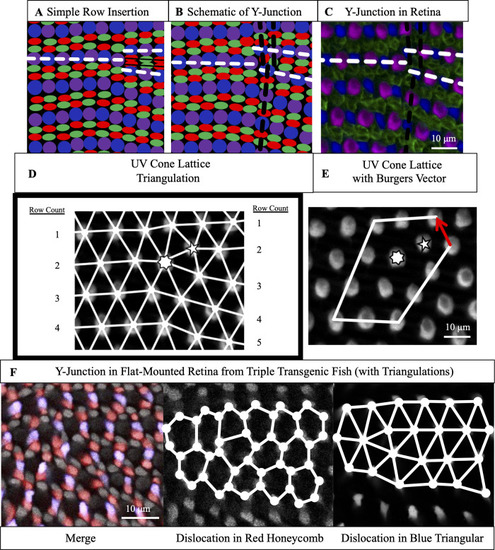Fig 2
- ID
- ZDB-FIG-210113-116
- Publication
- Nunley et al., 2020 - Defect patterns on the curved surface of fish retinae suggest a mechanism of cone mosaic formation
- Other Figures
- All Figure Page
- Back to All Figure Page
|
(A) Schematic of simple row insertion in cone mosaic. As new cone photoreceptors are incorporated to the right of the defect, a series of improper cone contacts (black box) within columns form. White dashed lines: rows associated with defect. (B) Schematic of a Y-Junction, a topological defect in the zebrafish cone mosaic. A Y-Junction only disrupts the cone mosaic near the core rather than along an entire line of contacts. White (black) dashed lines: rows (columns) associated with the defect. (C) A Y-Junction in a flat-mount retinal preparation from an adult, double transgenic (Tg[ |

